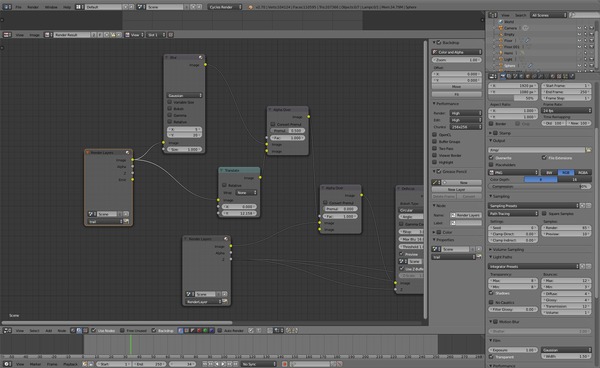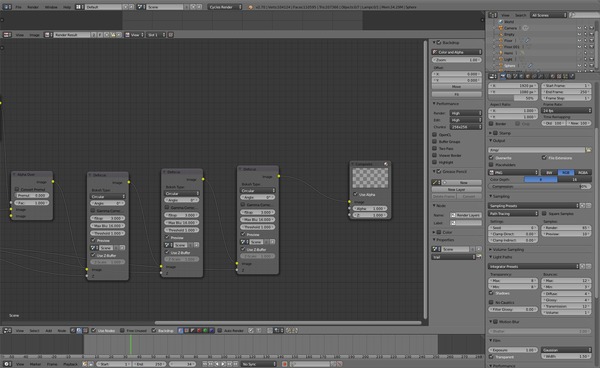I decided to make a graphic representing the materials described in Sun et al. (Sun et al., 2012) Nickel-rich transition metal nanoparticles, LiNiMO, where M is the transition metal, have high energy density. In this paper, they added a gradient between a nickel-rich core and a manganese outer-shell that has good energy density (215 mA h g) and good thermal stability at high temperature, a common failing for other nanoparticle-based cathode materials. They also added a secondary needle-like particle, which I didn’t put in my graphic. Here’s the picture:
It’s a very simple image to make in Blender actually. The first step is creating an emitting surface for the lithium. I just created a flat square and added a particle system to it that emits particles in the normal direction. The second piece is the nanoparticles, which are just spheres duplicated using the array modifier. My geometry looks like this:
Note that the lithium particles need to be in a separate layer than the nanoparticles. The particles have an emission texture and are the only lighting for the scene. The nanoparticle texture is just a ‘Magic Texture’ with some diffuse red. The cycles renderer is used for the node editing process. That’s where the cool stuff happens.
The lithium layer is on the far-left. It’s both blurred and translated, giving it that ghosting look that makes it move. It’s then is overlayed on the nanoparticle layer. Finally, I apply three sequential defocusings, to give it that tiny-object effect
Maybe I’ll go back and add some needle-like particles someday.
Cited References
- Sun, Y.-K., Chen, Z., Noh, H.-J., Lee, D.-J., Jung, H.-G., Ren, Y., Wang, S., Yoon, C. S., Myung, S.-T., & Amine, K. (2012). Nanostructured high-energy cathode materials for advanced lithium batteries. Nat Mater, 11(11), 942–947. https://doi.org/10.1038/nmat3435



